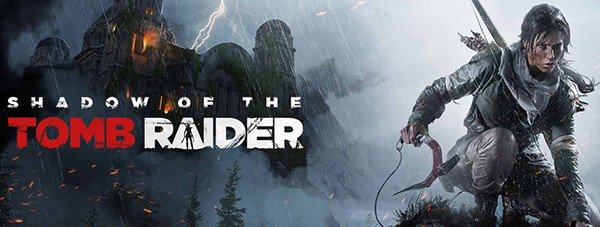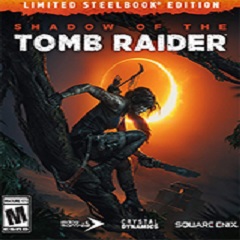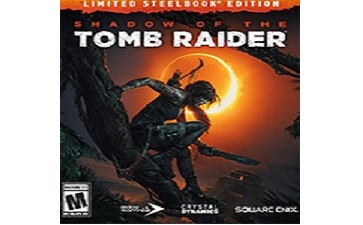- Green versionView
- Green versionView
- Green versionView

Shadow of the Tomb RaiderGame introduction
Tomb design
Scale and complexity: The ancient tomb is larger in scale, and the puzzles integrate physics, hydrology, and light and shadow mechanisms. For example, changing the water level activates the device, or using sunlight refraction to open a secret passage.
Hidden passages: Some ancient tombs require observing environmental details (such as murals, symbols) or using specific skills (such as "Perspective") to discover hidden paths.
Puzzle solving skills
Logical reasoning: Prioritize the observation of interactive elements in the environment (such as stones, levers, mirrors) and try to use them in combination.
Trial and error and adjustment: Some puzzles require multiple attempts, such as adjusting the angle or timing of the mechanism. If you get stuck, you can leave the area temporarily and return after you get new tools.
Challenge Tombs: Additional tombs that are independent of the main line and provide more difficult puzzles and unique rewards (such as rare equipment or skill points).
Shadow of the Tomb Raider Features
Skill tree
Three major branches:
Combat: Increase weapon damage and unlock combo skills (such as "Continuous Assassination").
Survival: Enhance resource collection efficiency (such as "Eagle Eye" marking interactive items), extend physical strength/oxygen bar.
Exploration: Unlock advanced movement abilities (such as "Air Dash") and improve puzzle-solving efficiency (such as "Perspective").
Skill point acquisition: Obtain skill points by completing tasks, challenges or exploring hidden areas, and freely distribute them to any branch.
Equipment upgrade
Weapon modification: Collect resources (such as leather, metal) to upgrade weapons to increase damage, stability or additional effects (such as silencers).
Clothing customization: Different clothing provides special bonuses (such as "stealth suit" to reduce the probability of being discovered, and "adventure suit" to increase climbing speed).

Shadow of the Tomb RaiderGame play
Exploration and puzzle solving:
Ancient tomb design: The ancient tombs in this game are larger in scale and full of traps. Players need to use various abilities such as climbing, rope swinging, and underwater exploration to solve puzzles.
Puzzle mechanism: The puzzle design combines physics, hydrology and light and shadow effects, focusing more on environmental observation and logical reasoning. For example, players may need to activate different devices by changing the water level, or use sunlight refraction to open secret passages.
Combat and Stealth:
Combat system: Provides three main gameplay methods: direct combat, stealth assassination and environmental utilization. Players can use bows, shotguns, rifles and other weapons to face enemies head-on, or they can hide in the shadows and use melee daggers or long-range bows to deal with enemies.
Stealth mechanism: Lara Croft can use jungle vegetation and quagmire walls to camouflage, and has a new ability to swing between tree branches, achieving a more dynamic stealth kill.
Props and skills: Newly added props such as "Fear Arrow" allow players to create chaos and carry out tactical interference. At the same time, the game provides a deeper skill tree system, which is divided into three directions: combat, survival, and exploration. Players can cultivate Laura's abilities according to their own preferences.
Picture and sound effects:
Picture performance: Using the next generation engine, the environment details are more realistic. The Tyndall effect caused by sunlight penetrating through the rainforest canopy, the delicate material feedback when the flashlight illuminates the murals in the dark cave, and the humid and realistic environmental performance in heavy rain weather, together create a world that is both beautiful and full of dangers.
Sound design: The environmental sound effects are clearly layered, and you can clearly distinguish the conversations of distant enemies and the chirping of insects nearby. The soundtrack was composed by Brian Taylor. While continuing the iconic theme melody of the series, it also incorporates a large number of national instruments and rhythms with South American characteristics.

Shadow of the Tomb RaiderGame configuration
Recommended requirements:
- Operating system: 64-bit Windows 7
- Processor: Intel Core i7-3770 3.40GHz or AMD FX-8350 4.0GHz
- Graphics card: NVIDIA GeForce GTX 970 or AMD R9 290x
- Memory: 8GB
- Hard disk space: 30GB
Minimum requirements:
- Operating system: 64-bit Windows 10
- Processor: Intel Core i3-2100 3.10GHz or AMD Phenom II X4 945 3.0GHz
- Graphics card: NVIDIA GeForce GTX 550 TI or AMD Radeon HD 7790
- Memory: 6GB
- Hard disk space: 30GB
Shadow of the Tomb Raider FAQ
Game crashes/black screen
Common reasons:
Outdated graphics card drivers or compatibility issues: AMD Radeon RX series graphics cards may crash frequently.
Insufficient hardware configuration: The graphics card performance cannot meet the high image quality requirements.
Software conflict: Background programs occupy too many resources.
Solution:
Update your graphics card driver: Make sure to use the latest version that matches your graphics card model and operating system.
Lower the image quality settings: Turn off special effects such as shadows and anti-aliasing to reduce the burden on the graphics card.
Close background programs: Release system resources and improve game stability.
Use an accelerator: such as biubiu accelerator to optimize network connections and reduce startup abnormalities.
Shadow of the Tomb Raider update log
1. Sweep the bug out and carry it out to the end
2. The most stable version ever
Huajun editor recommends:
Shadow of the Tomb Raider software takes up little memory, has stable performance, is free of any bundles, is green and safe, and is truly a conscientious software! This site also has"Plants vs. Zombies: Garden Warfare",Mount & Blade Fire & Sword,Dr. Mary mini game,Forest Ice and Fire Man 2 Invincible Edition,Pokemon Green Uranium, available for you to download!







































Useful
Useful
Useful